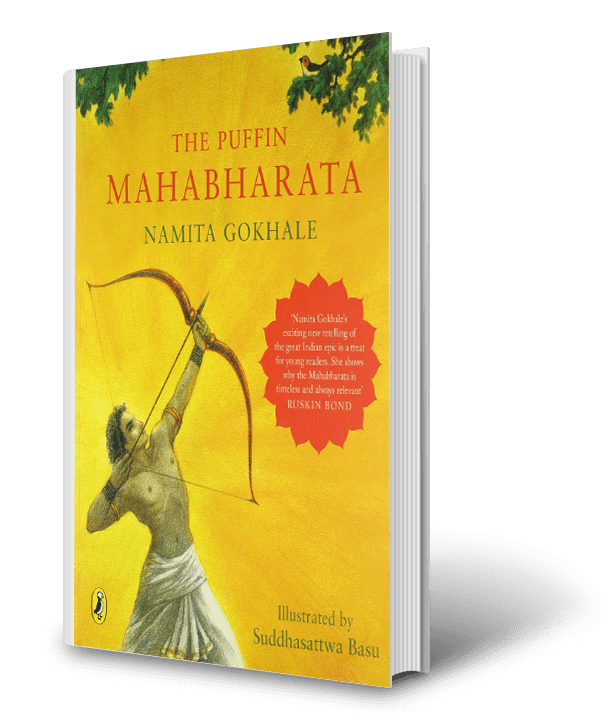
The Puffin Mahabharata
Gokhale takes the story to the bitter end culminating not in the victory but its aftermath thereby leaving the reader with a sense of the futility of war.
– The Hindu
A long, long time ago, in the ancient lands of India, known in those days as Bharatvarsha, a family quarrel grew into a bloody war. There had been wars before, and there have been wars since, but that mighty battle between warring cousins of the Kuru clan has become a part of the mythology and history of India. Told and retold a million times, the story of the Mahabharata is about defeat as much as victory, about humility as much as courage. It is the greatest story ever told.
Like a modern-day suta or storyteller, Namita Gokhale brings alive India’s richest literary treasure with disarming ease and simplicity. She retells this timeless tale of mortals and immortals and stories within stories, of valour, deceit, glory and despair, for today’s young reader in a clear, contemporary style.
A brilliant series of evocative and thoughtful illustrations by painter and animator Suddhasattwa Basu brings the epic to life in a vibrant visual feast. Matchless in its content and presentation, The Puffin Mahabharata is a book that will be cherished by readers of all ages.
It’s an age old story; one that’s been told and retold several times. But that doesn’t stop new books on the Mahabharata from coming out. This time it’s well known writer Namita Gokhale with the The Puffin Mahabharata.
Gokhale begins with a backgrounder explaining the cycles of times and the various ways in which the epic has been told and retold before she delves into the story of King Shantanu and the river goddess Ganga and the chain of events that finally culminates in the battle.
The charm of the Mahabharata lies not just in the good versus evil battle but also in the fact that one can identify with many of the characters. Of course traditionally Duryodhana and Dushasana are painted as black as black can be. But Gokhale tries to maintain a balance. She points out that Bhima’s bullying contributes to some of the trouble between the cousins and that Yudhistra’s weakness for gambling cannot be ignored. Of all the various characters, it is Arjuna and Karna who come out on top in this version.
Simply told
The tale runs smoothly and easily and there is no attempt to gloss over the various unsavoury incidents like the disrobing of Draupadi, Abhimanyu’s death or Bhima’s killing of Dushasana and Duryodhana. The philosophical parts of the story like the Bhagavad Gita and the Shanti Parva are not ignored but are put across with simplicity. Gokhale has also given many of the stories contained within the Mahabharata, though not all.
Also there is some information that you don’t normally find in children’s versions like the names of Draupadi’s sons from each of the Pandavas. Gokhale takes the story to the bitter end culminating not in the victory but its aftermath thereby leaving the reader with a sense of the futility of war.

